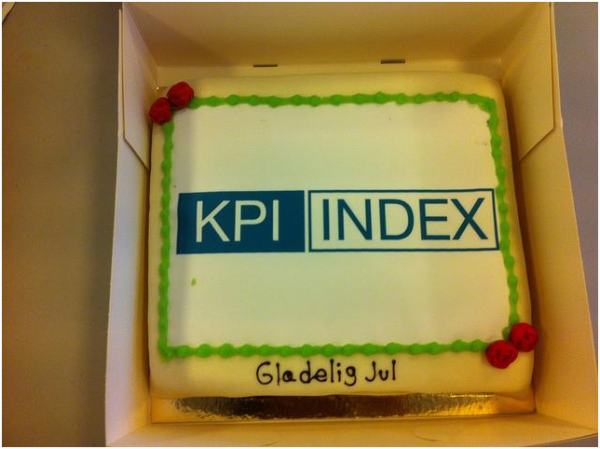In 2012, the business research and advisory firm Altimeter Group conducted a study of 61 brands, vendors, agencies and social media ecosystem contributors and surveyed 71 practitioners of social media and analytics to find out how different companies are measuring the impact of their social media strategies on their bottom line (or their Return on Investment: ROI), as well as whether or not those companies are actually measuring their ROI on social media effectively.
As with any other marketing strategy, the success of a social media ROI plan depends entirely upon properly quantifying the value of your social media efforts. But before you can measure the effectiveness of your campaigns and analyze the results, you need to know the metrics by which to determine success or failure. Interestingly, according to the self-reports of those companies surveyed, just 30% of them considered their efforts at measuring social media ROI effective.
The KPIs to Success
To determine the proper metrics, you must define the key performance indicators (KPIs) most aligned to your company’s mission and goals. This takes you to the top of a sequential list of KPIs, at which your metrics is at the bottom. In other words, you figure out your social media metrics last, after a list of other factors you need to figure out first.
And first, once again, is your company mission.
The Process of Getting There
Hopefully you already know your company’s mission, but if you don’t, now would be a really good time to figure it out. That’s because it is your mission—what you are about in the world, your purpose for existing—that determines your goals, which is next on the list.
Think of your mission as the WHY for your business. Why do you do what you do?
Next, think of your goals as WHAT you aim to accomplish. These goals can be better defined by breaking them down further into the larger goals of your business, the goals of the various departments in your business, followed of course by the social media goals within that department. But what department?
In many cases your marketing department will be the one utilizing social media to help achieve its goals in fulfilling your company mission. But it may not necessarily be that department. It can also be your sales, research, IT, customer service, executive management, or human resources department.
As you can probably start to see, the specific goals, tactics, and metrics that are best for each department may vary wildly.
A handy tool for identifying your goals on any level is called the BSC or Balanced Scorecard performance management method. It looks at four key areas in which your company’s success lies:
- Customer
- Finances
- Learning and Growth
- Internal Business Processes
Which brings us to this, and this is very important: the BIGGEST mistake most people make in their social media strategy is in trying to figure out their strategy and metrics before getting clear on their larger mission and objectives. In fact, according to a report on the website Search Engine Watch, just 20% of marketing departments are determining their social media goals first, before identifying their tactics.
(The second biggest mistake, incidentally, is trying to conduct a social media campaign for all aspects of your entire company at once, without breaking it down into these departments or areas.)
So to reiterate the process:
1 Company mission
2 Company objectives —>Department objectives
3 Social media objectives
4 Social media strategy —> Social media tactics
5 Social media metrics
Getting Social
Now that we’ve gotten that clear, we’ll discuss the last three steps of the process: social media objectives, social media strategy & tactics, and social media metrics.
Social media objectives are the ways in which you aim to use social media to further your larger departmental and overall company goals.
Some examples of possible social media goals are:
- To grow your pool of word-of-mouth advocates for your brand
- To decrease customer service call frequency and costs
- To increase sales by distributing discounts and coupons
Be sure to include the BSC method in your process here. Most businesses look at customer and financial needs almost exclusively without looking at growth and learning or internal business processes so much. But it’s those last two areas that cover things like training your staff to manage and utilize your social media tools (growth and learning) and developing the policies by which your social media department will be run (internal business processes). Logistics like these will take time and energy, which of course translates to money, so it’s well worth giving those considerations the same due diligence you would your customer and financial goals.
Once all these criteria are determined, you can finally identify those key performance indicators that will determine your social media strategy, or the roadmap for fulfilling your social media goals as determined and evaluated by those social media metrics.
Some examples of KPIs for social media include:
- Generating Facebook Likes and Twitter Follows to increase your social media exposure;
- Regularly publishing YouTube videos on a schedule (such as one a week) to build a channel your audience could subscribe to for a steady stream of information entertainingly delivered;
- Prompting clickthroughs of a link to your company website’s landing page/Home page.
Others include: pageviews (how many people are visiting your page on a social network), buzz (how many people are talking about your brand on a particular network), reach (how many friends, fans or followers you have), impression reach (how many of your messages, like Tweets or status updates, appear in a customer’s newsfeed on that network), and referrals (how many people found out about you through social media).
Notice the mention of Facebook, YouTube and Twitter. Those are the top three social networks by popularity, but they are far from the only ones. So part of defining your KPIs is determining which social networks are the right and best ones for fulfilling your objectives. Each social network brings something different to the table (e.g. microblogging, social bookmarking, picture/photo sharing, etc.).
The Sweet Six
Based on their aforementioned study, Altimeter Group identified six basic metrics for measuring social media ROI: three of which are “top-down” measurements and three of which are “bottom-up” measurements.
Those three main top-down social media metrics are:
- Anecdotes: such as customer reviews, testimonials and emails describing specific situations in which social media impacted a sale.
- Correlation: comparing two different data sets (e.g. Twitter Follows & revenue) to determine whether or not one influences the other.
- Multivariate Testing: comparing the revenue (or other metrics) of two groups of people, one exposed to social media and one not exposed to social media
And those three main bottom-up social media metrics are:
- Links & Tagging: measurements of customer engagement as determined by clickthroughs of a link, embedding of a cookie on a browser, or tagging of an item (e.g. a Like, Comment, Retweet, Share, etc.).
- Integrated: analytics systems offered by certain social networks or provided by downloadable or web-based third party apps.
- Direct Commerce: sales generated directly through an ecommerce platform (e.g. a storefront with shopping cart) incorporating into a company’s social media presence on a particular social network.
The Big Three
Having said all that, there are really just three primary business goals under which (almost) all others fall; and what’s more, these same goals also happen to represent the three fundamental social media metrics under which most others fall, and they are:
- Growing revenue – making money
- Reducing costs – saving money
- Improving satisfaction – growing customer base
Tim Wilson works as content manager at HostPapa, a website hosting company serving over 100,000 customers around the world. Since launching in 2006, HostPapa has offered reliable, budget-friendly, easy-to-use web hosting solutions for small to medium-sized businesses.







